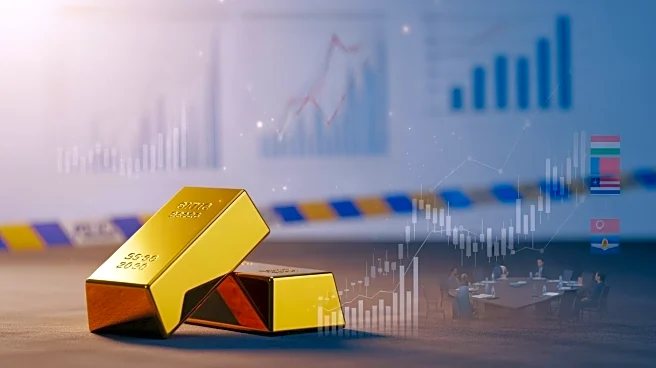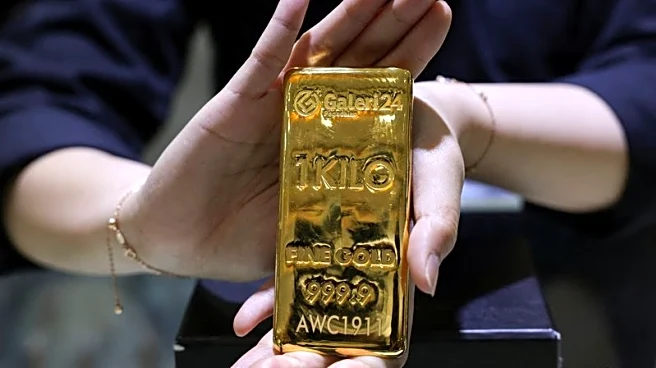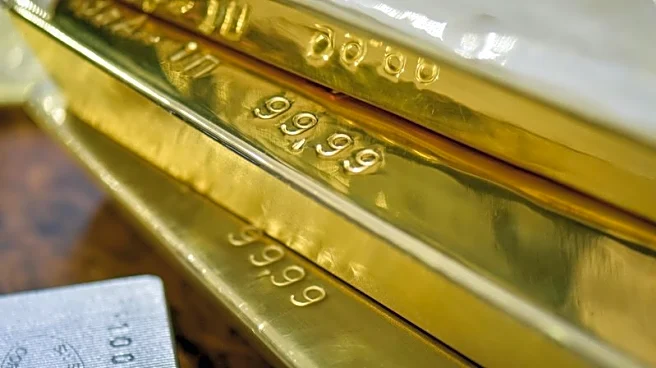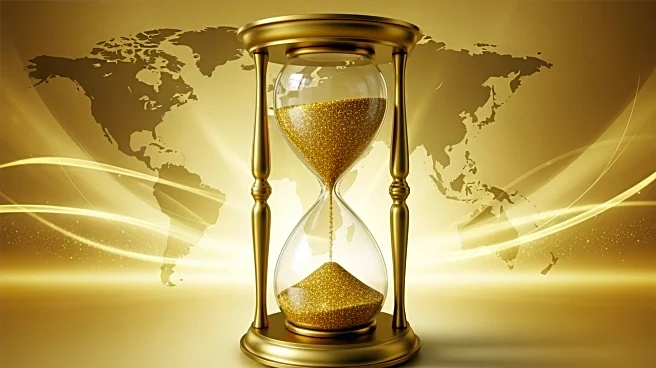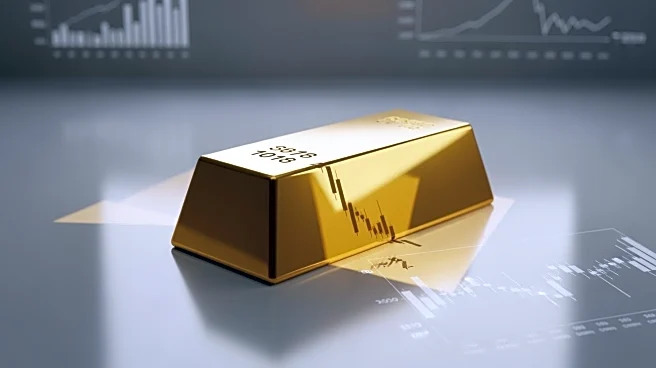What's Happening?
JP Morgan analysts have maintained a bullish outlook on gold, predicting that prices could average $5,055 per ounce by the fourth quarter of 2026. This forecast is based on strong investor demand and central
bank buying, averaging around 566 tons per quarter in 2026. Natasha Kaneva, Head of Global Commodities Strategy at JP Morgan, highlights the potential for further upside as the market enters a Federal Reserve rate-cutting cycle. The combination of stagflation anxiety, concerns about Fed independence, and broader debasement hedging supports gold's upward trajectory. The recent market consolidation is seen as healthy, with the pullback reflecting the digestion of rapid price gains since August.
Why It's Important?
The forecasted increase in gold prices underscores the metal's role as a hedge against economic uncertainties, including stagflation and concerns about monetary policy. As gold prices rise, it impacts investment strategies and central bank reserves, potentially leading to shifts in asset allocations. The anticipated Federal Reserve rate cuts could further influence gold prices, as historically, such cuts have lifted gold prices. The ongoing demand from investors and central banks highlights gold's significance as a safe-haven asset, affecting global economic dynamics and investment portfolios.
What's Next?
The market will closely watch the Federal Reserve's actions and economic indicators that could influence gold prices. Investors may adjust their strategies based on these developments, while central banks might reconsider their reserve allocations. The forecasted price increase suggests continued interest in gold as a hedge against economic instability, potentially leading to increased demand and market activity.
Beyond the Headlines
The forecasted rise in gold prices could lead to broader economic implications, including shifts in global asset allocations and central bank strategies. The role of gold as a hedge against economic uncertainties may gain prominence, influencing investment decisions and monetary policies. The interplay between economic indicators and gold prices will likely shape future market dynamics.


